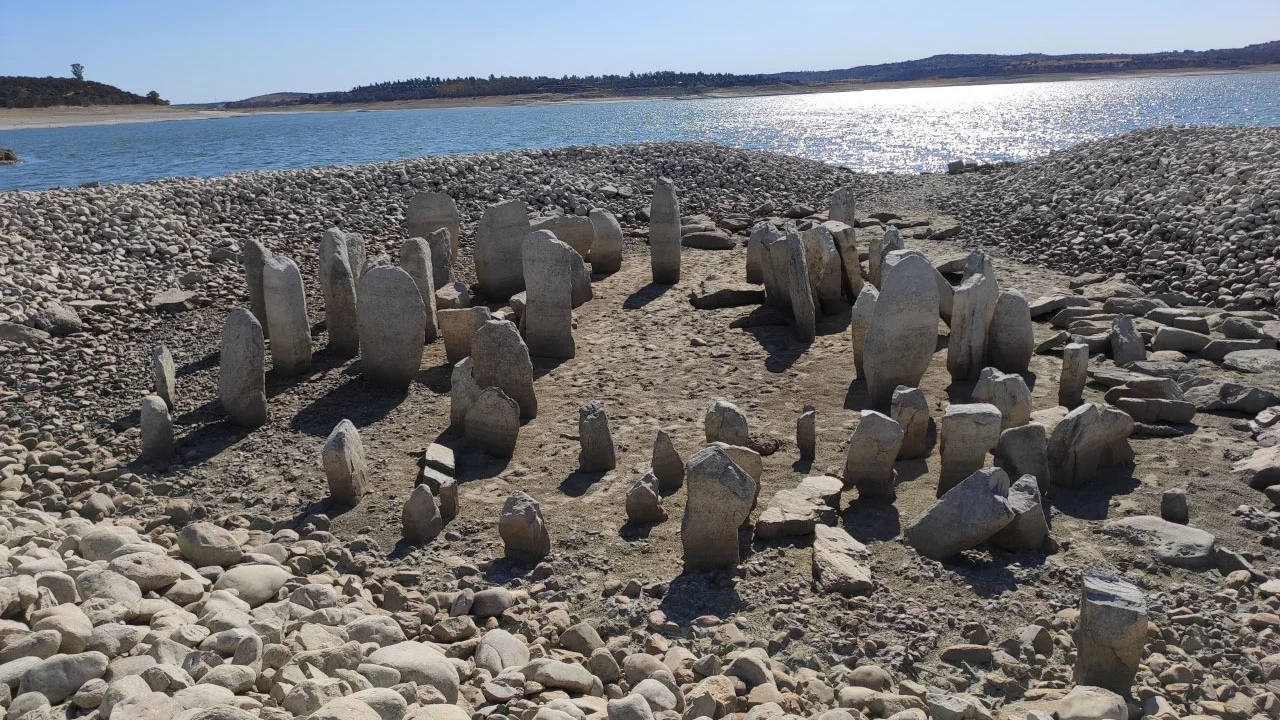
Submerged 'Spanish Stonehenge' resurfaces following intense drought
Submerged for over 50 years, an ancient stone monument has resurfaced from a drought-stressed Spanish reservoir
This summer's intense heat waves over Europe had some unexpected impacts, such as costing the Greenland Ice Sheet tens of billions of tonnes of ice over just one week.
In Spain, the extreme heat produced drought conditions, which taxed the country's water resources so much, it caused levels in the Valdecañas reservoir, west of Madrid, to recede enough that an ancient stone monument resurfaced along its shores.

Landsat 8 Operational Land Imager view of Valdecañas reservoir from July 23, 2013. The circle indicates the location of the Dolmen of Guadalperal. Credit: NASA

Landsat 8 Operational Land Imager view of Valdecañas reservoir from July 24, 2019. The circle indicates the location of the Dolmen of Guadalperal. Credit: NASA
The Dolmen of Guadalperal is a megalithic stone monument that was built somewhere between 5,000 and 7,000 years ago. It currently stands near the town of Peraleda de la Mata and has been called the "Spanish Stonehenge", due to its resemblance to that more famous ancient monument.

The Dolmen of Guadelperal on of July 28, 2019. Credit: Pleonr/Wikimedia Commons (CC BY-SA 4.0)
According to NASA: "Archeologists believe it was originally constructed as an enclosed space — a large stone house with a cap. The dolmen could have served as a tomb, a site for religious rituals, or a trading hub since it was relatively easy to cross the river at this location. The most recent recorded exploration and excavation of the site was by German archaeologist Hugo Obermaier in the 1920s. By the time Obermaier's findings were published in the 1960s though, Valdecañas Reservoir was filled, submerging history with water."
Submerged since the reservoir was built in 1963, the tops of these standing stones, or 'orthostats', have been seen poking up above the water's surface from time to time. This appears to be the first time they have fully resurfaced in the past 56 years.
With the monument fully exposed for the first time in decades, a local cultural association known as Roots of Peralêda wants to take advantage of the situation, to relocate the 150 standing stones to somewhere they can remain above water.
"We grew up hearing about the legend of the treasure hidden beneath the lake and now we finally get to view them," Angel Castaño, a representative from Roots of Peralêda, told Spanish news site the Local.
"There certainly may have been treasures buried beneath the stones once upon a time, but for us now, the treasures are the stones themselves. If we miss this chance it could be years before they are revealed again," Castaño explained. "And the stones, which are granite and therefore porous, are already showing signs of erosion and cracking, so if we don't act now it could be too late."
Sources: NASA Earth Observatory | AEMET | The Local | Raíces de Peralêda









